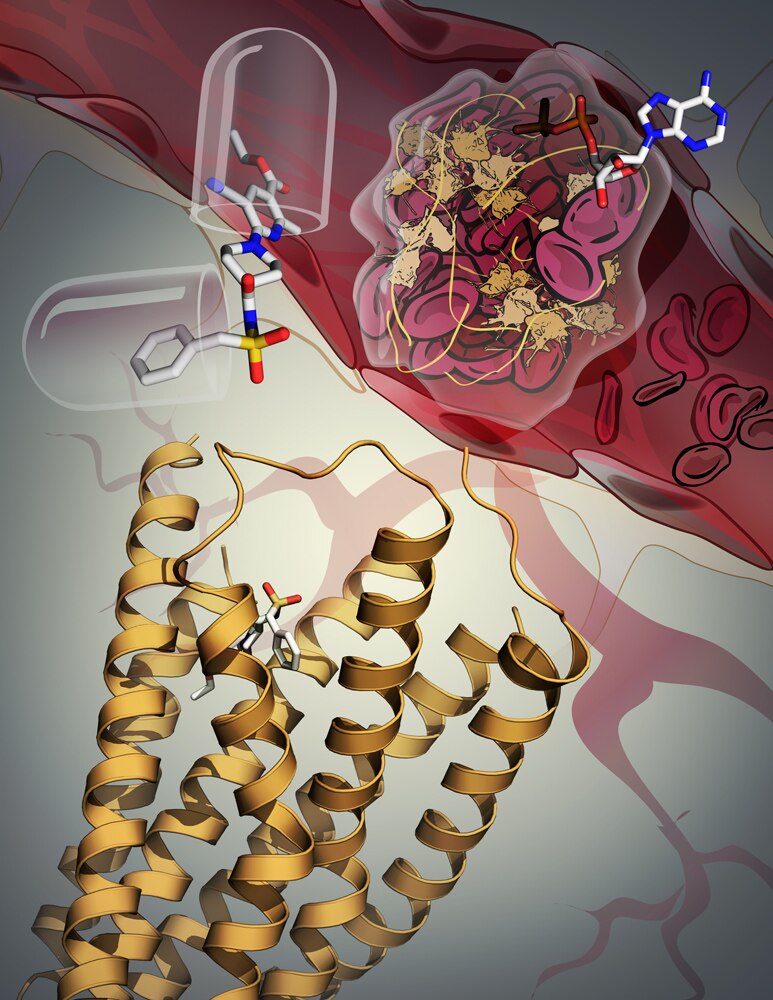Structure of blood-clotting receptor identified

A team at NIDDK together with scientists at Scripps Research Institute, Chinese Academy of Sciences and University of Bonn discovered the 3-D structure of a receptor that plays a key role in blood clotting. The key function of the receptor, named P2Y12, is to communicate with molecules to induce platelet clustering and subsequent formation of a thrombus (blood clot). The study indicates that the P2Y12 receptor’s structure undergoes an unusually pronounced rearrangement when the agonist – or, chemical signal from outside the cell – is replaced by an antithrombotic drug.
Antithrombotic drugs are used to limit the formation of blood clots that can lead to heart attacks and strokes, two leading causes of death in the United States. Such drugs represent a multi-billion-dollar market. Understanding in detail how the P2Y12 receptor responds to drug molecules is the first step toward improving antithrombotic drugs and developing potential treatments for nervous system disorders, chronic pain and other conditions.
The studies published in Nature on March 23 and April 30.
Audio Transcripts
Complete audio transcript for Structure of blood-clotting receptor identified (PDF, 154.19 KB)
Audio Clips
By Dr. Kenneth A. Jacobson, Lab Chief, NIDDK
What is a receptor? (MP3, 226.6 KB)
Understanding the P2Y12 receptor (MP3, 718.84 KB)
NIH’s impact on drug development (MP3, 310.27 KB)
Significance of the research (MP3, 444.96 KB)

